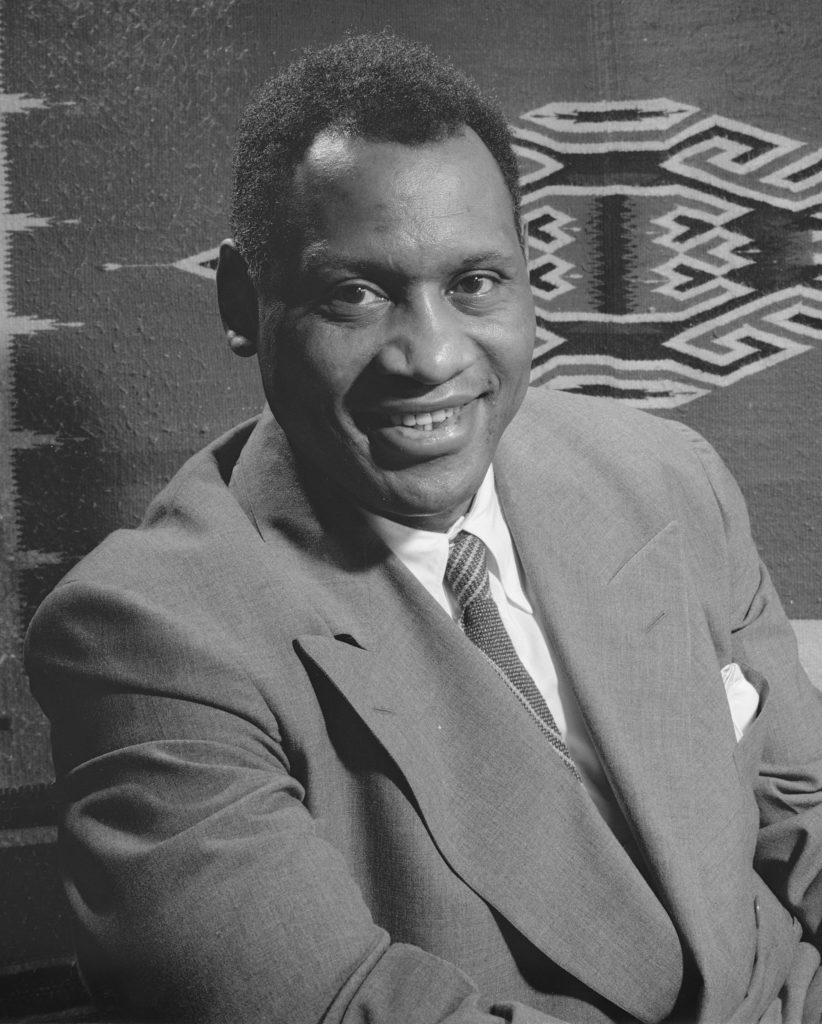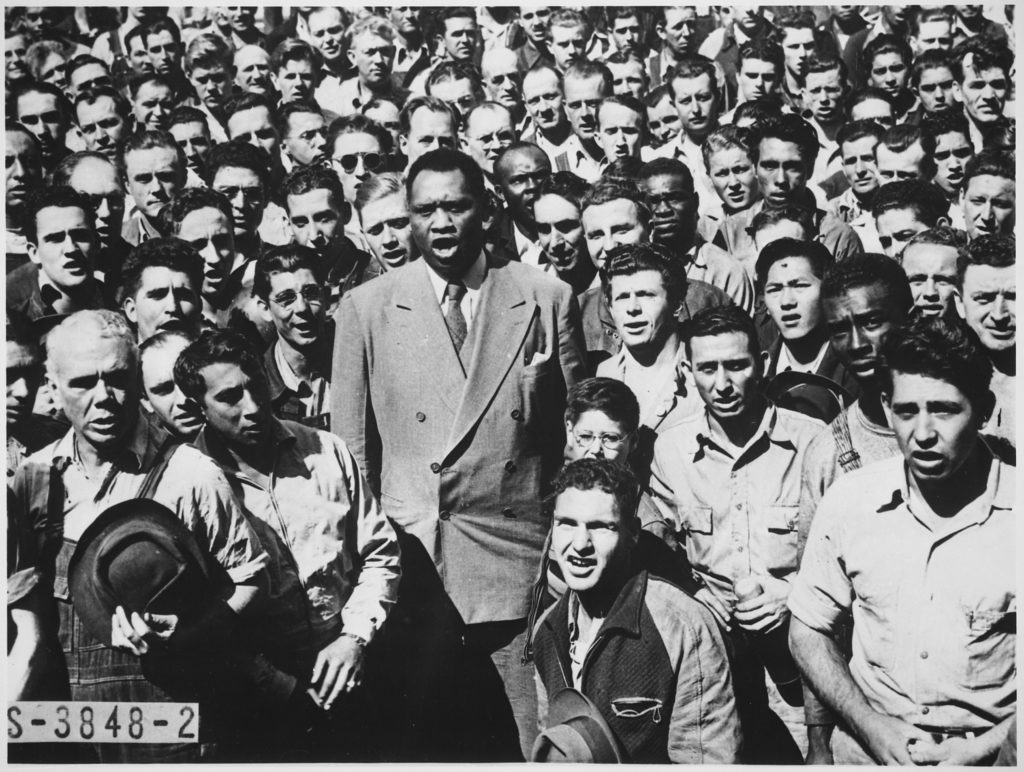
We mark the death on January 23, 1976 – 47 years ago today – of the American bass-baritone singer, stage and screen actor, civil rights activist, professional football player, and graduate of Columbia University Law School Paul Robeson at the age of 77, in Philadelphia. Born in Princeton, New Jersey on April 9, 1898, the son of an escaped slave turned Presbyterian minister, Robeson had more intellectual, artistic, and athletic gifts and lived more lives than any 10 (20? 50? 100?) so-called “normal” people. And he had to fight for every one of those lives, growing up a black person in early twentieth century America.
“Larger than Life”
The English-language idiom “larger than life” describes people “who are better and stronger and smarter than the average Joe”: individuals imbued with characteristics and abilities far beyond those of “ordinary” human beings. Typically, the idiom is reserved for fictional characters, who are gifted with superhuman (or nearly so) qualities and abilities. The heroes, warriors, gods, and goddesses of myths and legends are, by definition, “larger than life.” Achilles, Hercules, Zeus, Odysseus, Thor, Brünnhilde (and many, many more) would all qualify.
Comic book characters and superheroes are likewise, by their nature, “larger than life.” Certain other fictional characters become larger than life thanks to their singular identity: thanks to their stature, their presence, and their flair. Love them or hate them, we remember them. For example, Harry Potter and Frodo Baggins; Cruella de Vil and Scarlet O’Hara; Nancy Drew and Sherlock Holmes would all qualify.
Employed judiciously, “larger than life” can also be used to describe an actual human being, providing that person’s life, abilities, personality, and accomplishments truly distinguish them from the rest of us. When used to describe an actual person, the idiom gets its power from its use of figurative license, since, in fact, it’s impossible to actually quantify the “size” of a life.
According to an entry in languagehumanities.org:
“The use of exaggeration is what gives this phrase its particular power. Especially when it is used in reference to an actual person, there can hardly be a greater compliment than to call someone “larger than life.” That is why it is usually reserved for only the most noteworthy personalities, or else its impact would be somewhat lessened.”

Paul Robeson (1898-1976) was truly “larger than life.”
Robeson’s life as a singer, actor, athlete, intellectual, and activist; as a Black American aggressively and publicly battling racism and Jim Crow; as a socialist and, to many, a communist dupe and traitor to America defies easy telling. As such, this post is going to focus on Robeson’s preternatural talent and artistry, and will trace his life though 1933, the year he made the film, The Emperor Jones. Through interviews and archival footage, tomorrow’s Dr. Bob Prescribes post will briefly observe his political awakening and subsequent activism, finally focusing on the controversial but still breathtaking The Emperor Jones, “breathtaking” thanks to Robeson’s for-the-ages performance.…
Continue reading, and listen without interruption, only on Patreon!
Become a Patron!Listen and Subscribe to the Music History Monday Podcast
Podcast: Play in new window
Subscribe: Apple Podcasts | Spotify | Pandora | iHeartRadio | RSS | More
